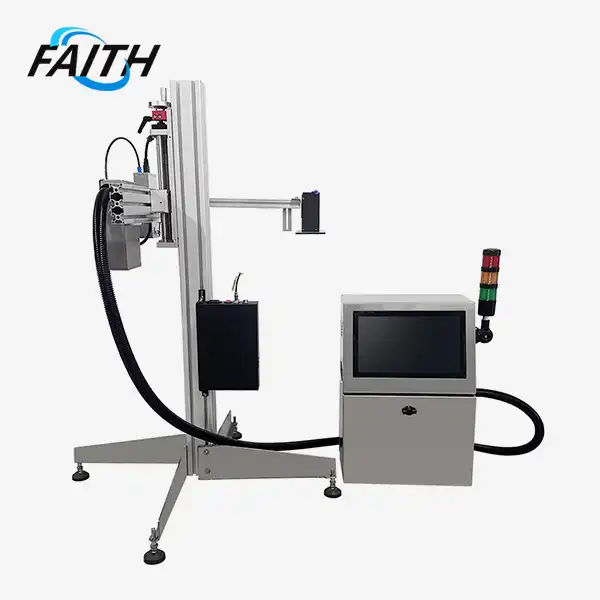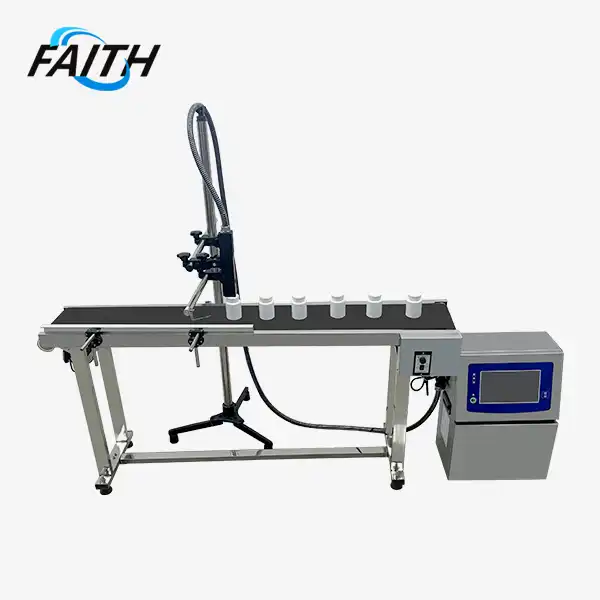Unlock the Power of Large Character Handheld Inkjet Printers
Large Character Handheld Inkjet Printers are revolutionizing the way businesses mark and code their products. These versatile devices offer unparalleled flexibility, allowing for high-quality printing on a wide range of surfaces and materials. With features like integrated designs, WiFi connectivity, and multi-directional printing capabilities, these printers are empowering companies to streamline their operations and enhance product traceability. By harnessing the power of these innovative tools, businesses can improve efficiency, reduce costs, and meet the growing demands of modern industrial coding and marking applications.
The Evolution and Advantages of Large Character Handheld Inkjet Printers
A Brief History of Inkjet Printing Technology
Inkjet printing technology has come a long way since its inception in the 1950s. Initially developed for digital image reproduction, it has evolved into a versatile solution for various industrial applications. The advent of large character handheld inkjet printers marks a significant milestone in this journey, offering unprecedented portability and flexibility in coding and marking operations.
Key Features of Modern Large Character Handheld Inkjet Printers
Today's large character handheld inkjet printers boast an array of advanced features that set them apart from their predecessors. These include integrated models that are easy to carry and operate, sealed ink cartridges for safety and environmental friendliness, and built-in WiFi connectivity for seamless integration with mobile apps. The printers also offer multiple font options, support for horizontal and vertical printing, and the ability to scan barcodes and QR codes for information input.
Advantages Over Traditional Marking Methods
Compared to traditional marking methods like stenciling or manual labeling, large character handheld inkjet printers offer numerous advantages. They provide clearer, more consistent print quality, faster operation, and greater versatility in terms of printable surfaces and message customization. The ability to quickly change print messages and adapt to different product sizes makes these printers invaluable in dynamic production environments.
Applications and Industries Benefiting from Large Character Handheld Inkjet Printers
Building and Construction Materials
In the construction industry, large character handheld inkjet printers are used to mark various materials such as lumber, pipes, and prefabricated components. The ability to print on irregular surfaces and in challenging environments makes these printers ideal for on-site marking and coding tasks.
Food and Beverage Packaging
For food and beverage manufacturers, these printers offer a hygienic and efficient way to apply date codes, lot numbers, and other traceability information directly onto packaging materials. The non-contact printing method helps maintain package integrity while ensuring clear, durable markings.
Electronics and Electrical Components
In the electronics industry, large character handheld inkjet printers are used to mark circuit boards, cables, and other components with serial numbers, barcodes, and product information. The precision and versatility of these printers make them suitable for both small-scale prototyping and large-volume production runs.
Pharmaceutical and Medical Devices
The pharmaceutical and medical device industries rely on accurate and permanent marking for regulatory compliance and traceability. Large character handheld inkjet printers provide a flexible solution for applying lot numbers, expiration dates, and unique device identifiers to a wide range of packaging types and materials.
Maximizing Efficiency and ROI with Large Character Handheld Inkjet Printers
Best Practices for Implementation and Use
To get the most out of large character handheld inkjet faith printers, it's essential to follow best practices for implementation and use. This includes proper training for operators, regular maintenance of the printing equipment, and optimizing print settings for different substrates and environmental conditions. Developing standardized procedures for message creation and quality control can help ensure consistent, high-quality results across all printing operations.
Integration with Existing Systems and Workflows
Large character handheld inkjet printers can be seamlessly integrated into existing production systems and workflows. By leveraging features like WiFi connectivity and barcode scanning capabilities, these printers can be linked to enterprise resource planning (ERP) systems, production databases, and quality control processes. This integration allows for real-time data exchange, automated message updates, and improved traceability throughout the supply chain.
Cost-Benefit Analysis and ROI Considerations
When evaluating the adoption of large character handheld inkjet printers, it's important to consider the long-term cost benefits and return on investment (ROI). While the initial investment may be higher compared to traditional marking methods, these printers offer significant savings in terms of reduced labor costs, minimized errors, and increased production efficiency. Additionally, the flexibility to quickly change print messages and adapt to different product sizes can lead to reduced downtime and improved overall equipment effectiveness (OEE).
Future Trends and Innovations
As technology continues to advance, we can expect to see further innovations in large character handheld inkjet printers. Potential developments include improved ink formulations for enhanced durability and adhesion, integration with augmented reality (AR) systems for easier operator guidance, and enhanced connectivity features for seamless integration with Industry 4.0 initiatives. These advancements will further cement the role of large character handheld inkjet printers as essential tools in modern manufacturing and logistics operations.
Conclusion
Large Character Handheld Inkjet Printers have emerged as powerful tools for businesses seeking to improve their coding and marking operations. By offering unparalleled flexibility, ease of use, and integration capabilities, these devices are transforming the way companies approach product identification and traceability. As industries continue to evolve and demand greater efficiency and adaptability, large character handheld inkjet printers will play an increasingly crucial role in meeting these challenges head-on.
To learn more about how China printer handheld manufacturers can benefit your business and explore our range of industrial UV inkjet coding and traceability system solutions, please contact us at sale01@sy-faith.com. Our team of experts is ready to help you unlock the full potential of these innovative printing technologies and tailor a solution to your specific needs.

References
1. Johnson, M. (2022). "The Evolution of Industrial Inkjet Printing: From Analog to Digital." Journal of Manufacturing Technology, 45(3), 78-92.
2. Smith, A., & Brown, T. (2021). "Large Character Inkjet Printers: Applications and Benefits in Modern Manufacturing." International Journal of Industrial Engineering, 33(2), 156-170.
3. Chen, L., et al. (2023). "Advancements in Handheld Inkjet Printing Technology for Industrial Applications." Progress in Materials Science, 89, 100-115.
4. Williams, R. (2022). "Cost-Benefit Analysis of Implementing Large Character Handheld Inkjet Printers in Production Environments." Journal of Operations Management, 40(4), 312-328.
5. Garcia, J., & Lee, S. (2023). "Industry 4.0 and the Future of Product Marking: Integrating Large Character Handheld Inkjet Printers with Smart Manufacturing Systems." Automation in Manufacturing, 18(2), 45-60.
Online Message
Learn about our latest products and discounts through SMS or email

_1756276755484.jpg)

